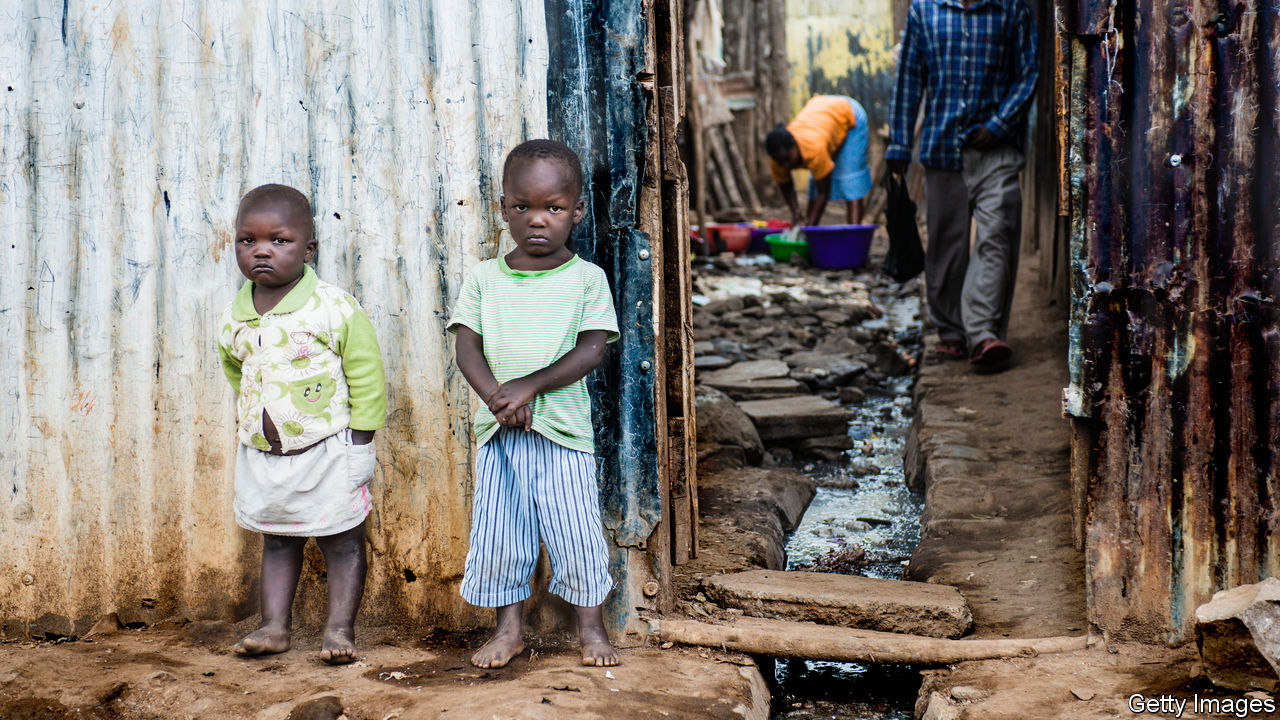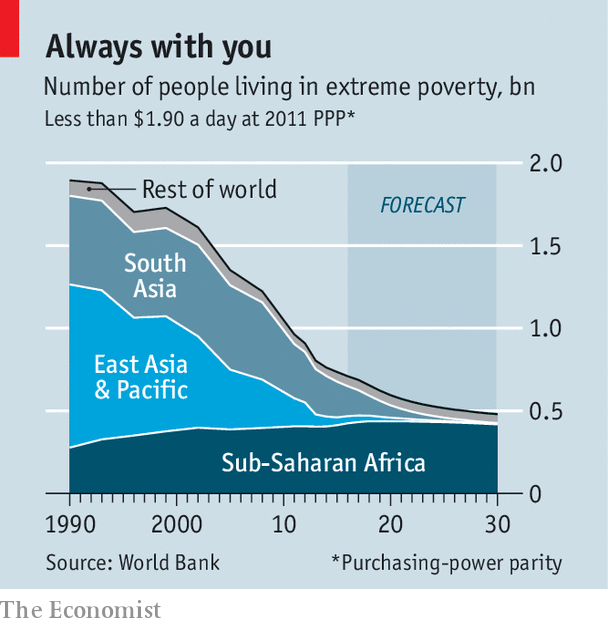
HANS ROSLING, a Swedish academic who died in 2017, became famous for telling people that the world was faring better than they believed. One of his favourite examples was the rapid decline in extreme poverty. Sadly, just as Rosling’s elegant charts and YouTube talks drilled that story into people’s minds, the facts began to change.
On September 19th the World Bank released estimates for extreme poverty in 2015, defined as living on less than $1.90 a day at 2011 purchasing-power parity. The good, Roslingish news is that poverty continued to diminish (see chart). In 2015 the extreme poor numbered 736m people, or 10% of the world. The Bank’s best guess for 2018 is 8.6%.
The bad news is that poverty is becoming harder to tackle. Over the past few decades, rapid economic growth and the expansion of welfare in Asia have borne down on extreme want there. That leaves sub-Saharan Africans as a growing majority of paupers. African poverty is especially intractable because of weak economies, high birth rates and the fact that many poor Africans are not even close to the $1.90 line. Between 2013 and 2015, the World Bank thinks, the poor population of sub-Saharan Africa grew from 405m to 413m. As a result, the global poverty rate is going down about half as quickly as before.

There is a broader lesson in that, says Laurence Chandy, director of data and research at UNICEF, the UN Children’s Fund. The world has been preoccupied with the task of pulling people out of extreme poverty. But there was always another challenge, which is becoming more pressing. How can entire populations be prevented from falling into it?The latest estimates contain another nasty surprise. In the Middle East and north Africa the number of deeply impoverished people appears to have almost doubled in two years, from 10m to 19m. Two war-torn countries, Syria and Yemen, explain this growth. It is hard to be certain, given the difficulty of collecting data. But the Middle Eastern jump hints at a broad change. Increasingly, extreme poverty is found in chaotic, ill-governed places. Figures on hunger released earlier this month suggest that it is growing in Venezuela.
No comments:
Post a Comment
Note: Only a member of this blog may post a comment.